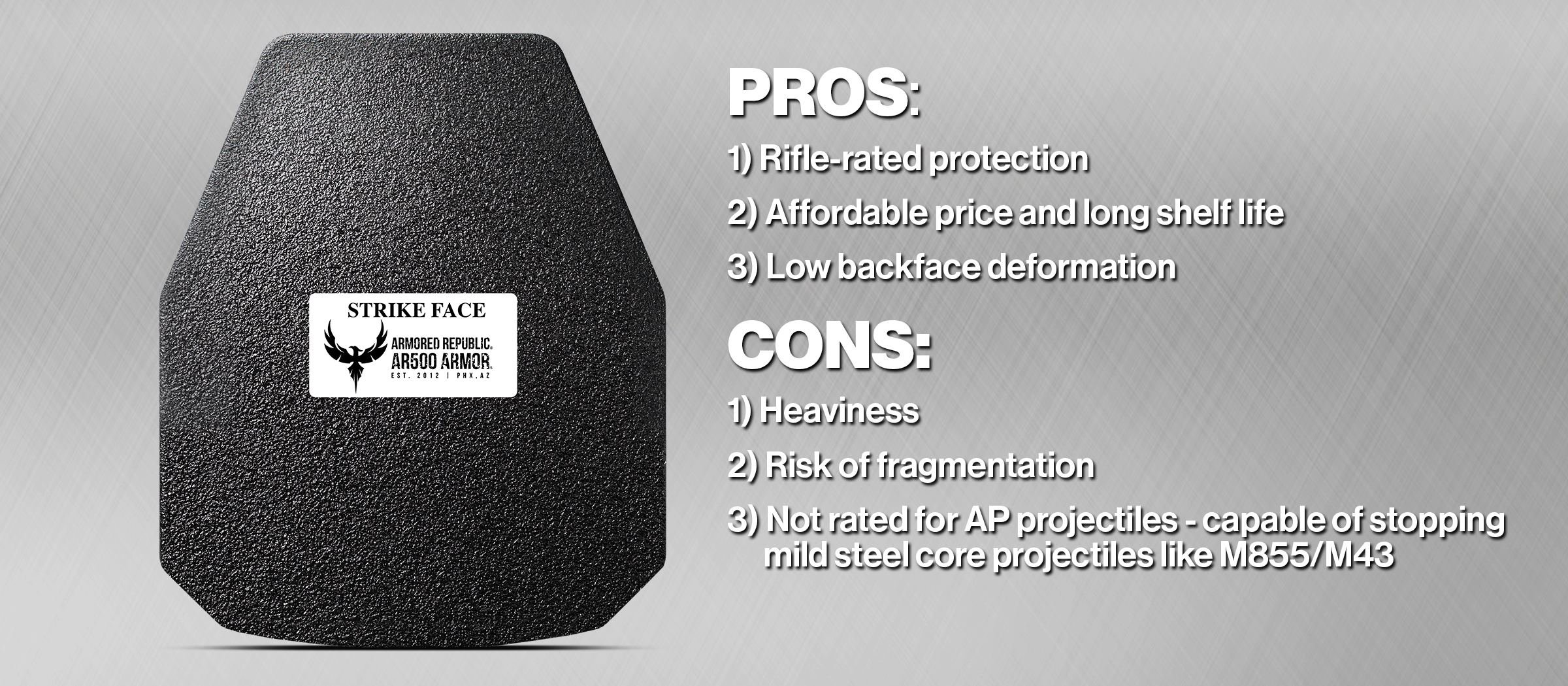Pros and Cons of Alloy (Steel) Armor
Metal alloys (such as steel) are a popular choice for rifle-rated body armor. If you’re more focused on pistol-rated armor, you should check out our soft armor section. If steel's additional weight is a concern, you may want to check out our polyethylene page.
There are some things you should know about steel armor before deciding. As with soft, polyethylene, and ceramic armor, there are pluses and minuses to running steel. In this section, we want to go through each of the pros and cons so you can decide if steel armor is suitable for you.
First, we’ll cover the basics of steel armor.
What is Steel Body Armor?
Manufacturers make steel armor out of high-carbon metal alloys. What type of steel is used in body armor? The most common are steels like AR500 and AR650. These materials can withstand significant impact and are abrasion-resistant (AR). Their hardness and durability make them ideal recreational targets for the range.
Unlike polyethylene armor, which “captures” the bullet, and soft armor, which “catches” the bullet, steel armor disintegrates and redirects the bullet upon impact.
Steel armor plates go up to level III (including III+), meaning they also protect against the threats in level II and IIIA. Most proponents would tout steel's high ballistic rating and affordable price as two main draws. But those aren’t the only appealing features.
Let’s look at the main reasons people like steel body armor.
What's Better Steel or Ceramic Armor?
At Armored Republic we've put together another Knowledge Base article to deep dive into that comparison: Steel vs Ceramic Armor Plates

Pros of Steel Body Armor
Why is steel good for armor?
Of all the body armor categories, steel gives us the most highlights to discuss. But don’t decide just based on the sheer number of benefits. Ensure those benefits are the specific ones you're looking for in your body armor.
- Rifle-Rated Protection: When you want protection against rifle threats, you need to start at level III ballistic ratings. That automatically rules out some materials. Level III steel plates can stop all the following:
- 7.62x51 M80 Ball at 2780 feet per second (FPS)
- 5.56 M855/SS109 (Green Tip) at a velocity of 2,780 FPS
If you go up to level III+, you get the following additional protection:
-
- 7.62x39/7.62x51/5.56 M193s
- .223/.308 WIN
- Affordable Price and Long Shelf Life: Two huge benefits of steel are the initial price tag and the shelf life. These are both helpful if you’re operating within a budget. The price of steel armor makes it some of the most attainable armor available for the average citizen. It has similar protection to polyethylene plates without the added cost.
- How long does steel body armor last? Now, consider the shelf life. All other types of armor have a 5-year shelf life, meaning the manufacturer’s warranty is 5 years. That can get a little pricey for most people. Does steel body armor expire? Yes, but steel armor has a 20-year shelf life, so you don’t have to replace it nearly as often.
- Extreme Durability: When you’re into the rifle protection category, you may end up looking at ceramics as well. Ceramic armor is brittle and susceptible to cracks. Polyethylene armor can break down under extreme temperatures, either hot or cold. Not so with steel. As we mentioned above, steel is exceptionally durable. Steel armor owners have the assurance that there won't be invisible weak points when they need their armor. And they know that their armor can handle extreme heat or cold without degradation.
- Multi-Hit Protection: Not only can you drop steel armor, but it can also withstand multiple hits. Again, the composition of a ceramic plate doesn’t allow for this. Think about the environment and the types of threats you're preparing for. How concerned are you with facing multiple shots on target? Steel can handle multiple strikes better than any other armor material.
- Edge-to-Edge Protection: Complete edge-to-edge protection is one of the top benefits of steel. When you purchase a 10" x 12" ballistic plate, you're expecting 10" x 12" of ballistic protection. But that's not always what you get. The National Institute of Justice (NIJ) standards allow your armor to perform within a particular edge shot zone. That means the outer 2-3” of the material may not even offer you ballistic protection. With metal alloys like steel, you don't have to worry about how your armor will perform along those edges. Check out our edge-to-edge protection Knowledge Base article for further details.
- Low Backface Deformation: If you spend any amount of time researching body armor, you'll come across the term backface deformation (BFD). That's when the ballistic plate deforms to the interior (the side against your body) after a projectile strike. The NIJ .06 standards allow for up to 44mm, or 1.73” of BFD. That’s the amount of BFD a plate can display and still pass. You may very well survive that strike, but your internal organs will be in rough shape. Steel armor doesn’t come anywhere close to that limit. Steel boasts the least amount of BFD of all types of body armor due to its rigidity. That said, we recommend utilizing a trauma pad no matter what type of armor you go with.
Cons of Steel Body Armor
Now that we've covered the many benefits of steel armor, let's talk about a couple of drawbacks. Steel armor certainly has its share of critics. Why is steel body armor bad, according to them? Most of the complaints fall into two categories.
- Heaviness: First, some people don’t like the weight of steel body armor. How much does steel body armor weigh? That depends on the size of the plate, the type of cut, and the amount of coating. At a minimum, your plate will probably be roughly 5 pounds. Some plates could be closer to 10 pounds, depending on the variables we mentioned. This weight may not be for everybody. As we stated above, those interested in lightweight armor designed to defeat rifle rounds could also look at polyethylene armor. The weight of steel is comparable to the weight of ceramic.
- Risk of Fragmentation: There are lots of opinions online about steel armor spalling, many of which are based on flawed testing. When we talk about fragmentation and spalling we’re describing what happens when the bullet breaks up into pieces upon impact. Remember, steel armor defeats the threat by disintegrating the bullet. That's called bullet fragmentation, and that shrapnel must go somewhere. The concern is that it will injure the wearer’s neck, face, and arms. So, is steel body armor safe? Yes, with the proper precautions. It’s a misconception that all steel has a frag problem. We recommend using a quality ballistic steel core plate, your plate carrier, and a proper spall and frag coating like our FragLock™. We fully addressed this concern in our video: Does Steel Armor Have a Frag Problem?
Conclusion
Our goal is always to equip free men with the tools of liberty to protect their God-given rights. That means providing you with the knowledge you need to make an informed decision on your end. For more information on alloy body armor, head to our Body Armor page and check out our A series.
